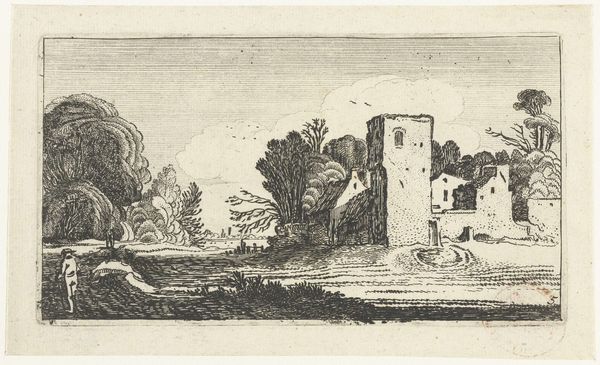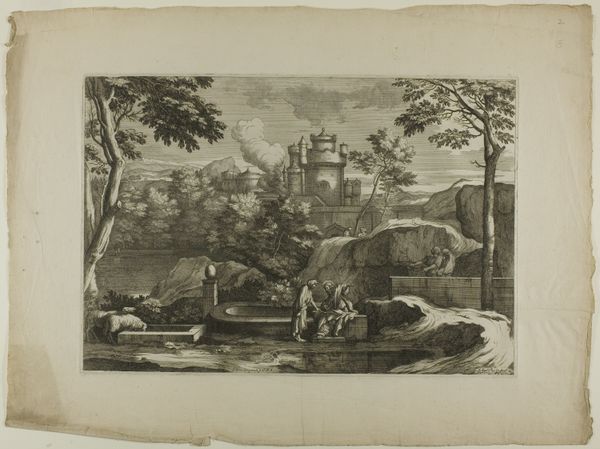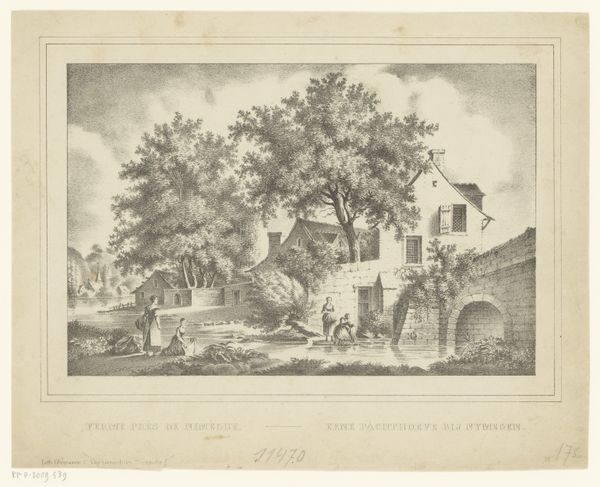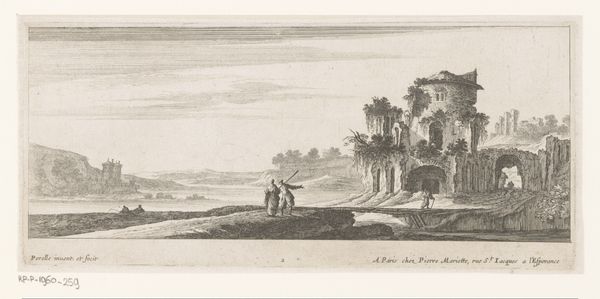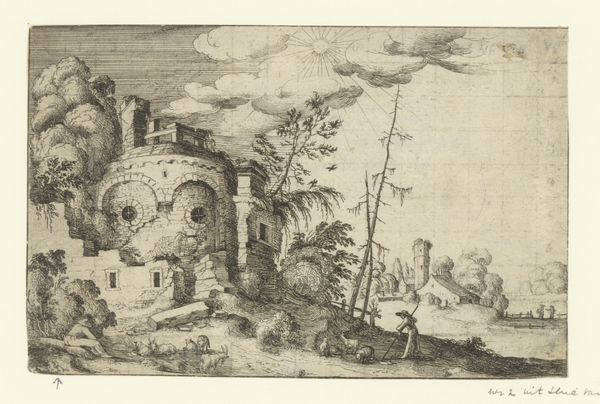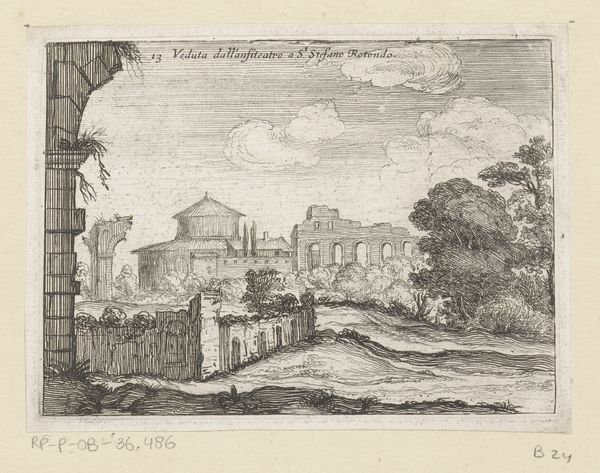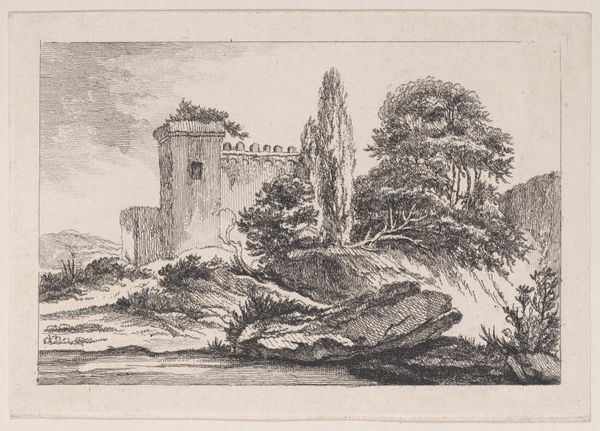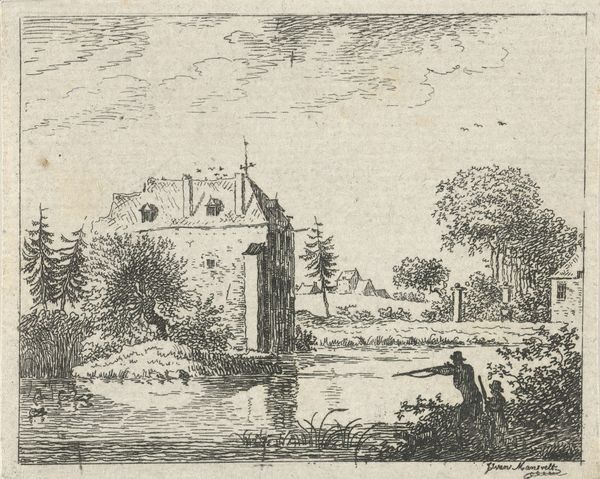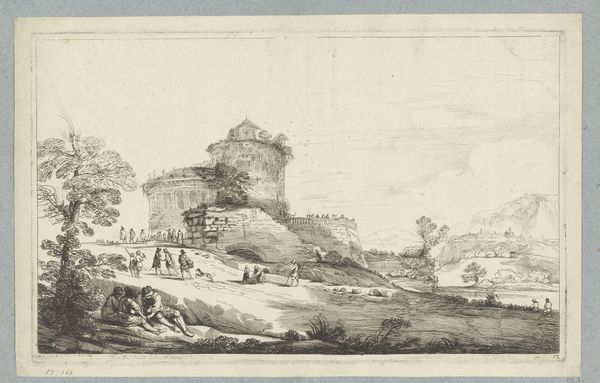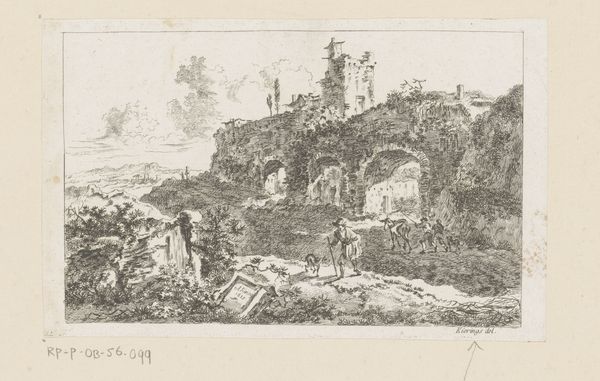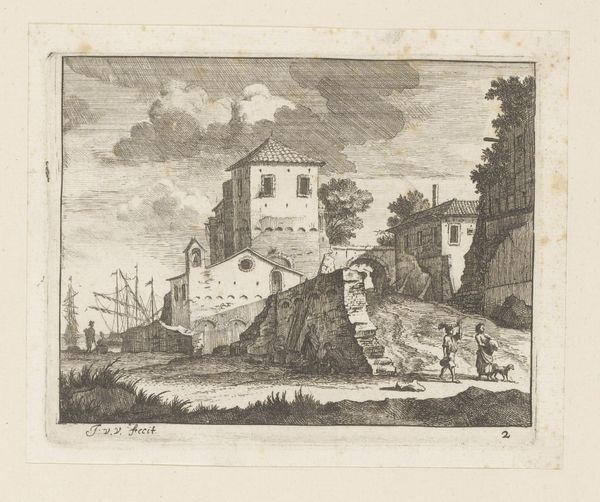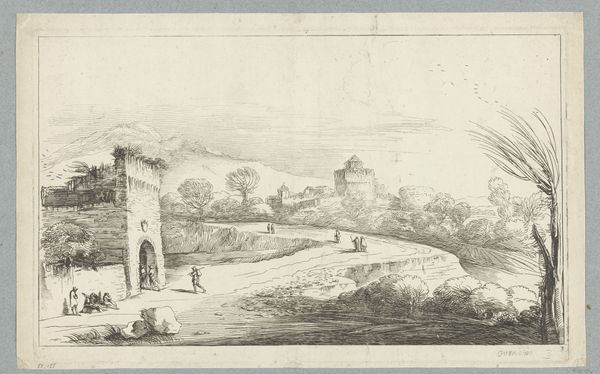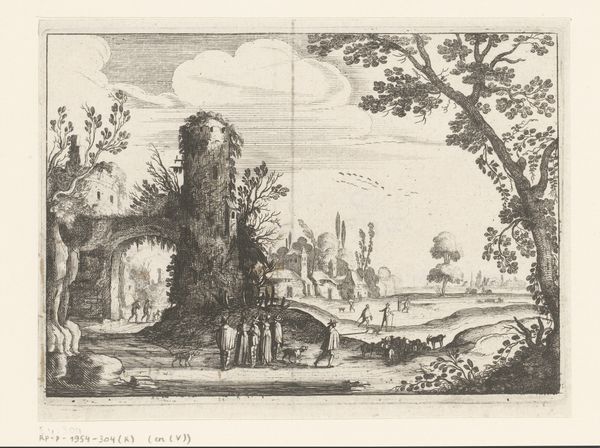
drawing, print, etching, paper
#
drawing
# print
#
etching
#
landscape
#
paper
Dimensions: 120 × 1890 mm (image/plate); 170 × 280 mm (sheet)
Copyright: Public Domain
Jan van de Velde II created this etching, Landscape with a Round Tower, at the height of the Dutch Golden Age. We see a pastoral scene, but how does its imagery create meaning through visual codes, cultural references, and historical associations? This idealized landscape, common in Dutch art of the 17th century, reflects a society grappling with its identity after a long struggle for independence from Spain. It’s no accident that the round tower, a symbol of the past, is depicted in decay. Van de Velde contrasts it with the active figures in the foreground, suggesting a forward-looking society. The etching medium itself, relatively new at the time, speaks to a culture embracing innovation. To truly understand this piece, we must look at the period’s social and economic structures, and how institutions like the art market shaped artistic production. A study of period documents such as municipal records, guild regulations, and auction catalogues, could reveal how art was consumed and valued at the time. It’s through this historical lens that we can fully appreciate the cultural significance of works like this one.
Comments
No comments
Be the first to comment and join the conversation on the ultimate creative platform.
